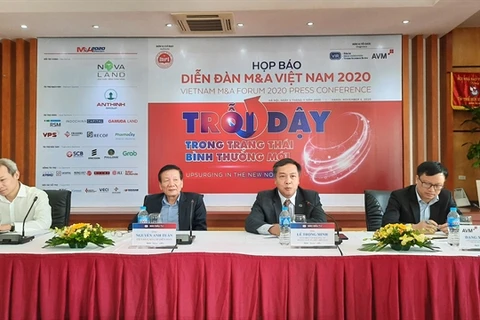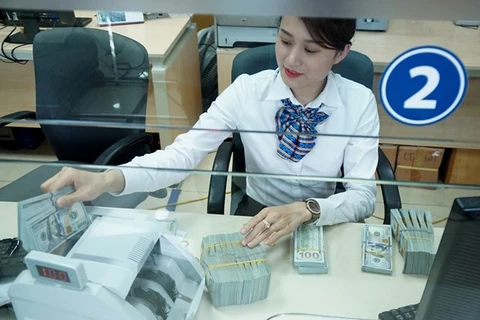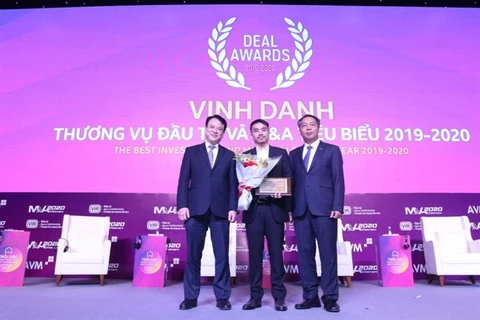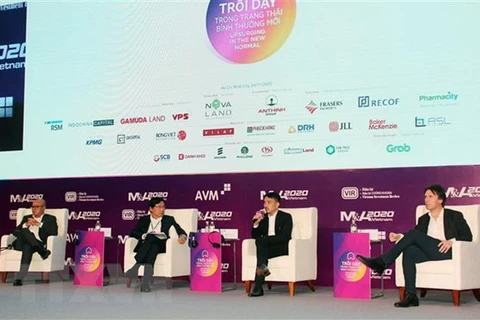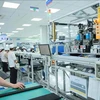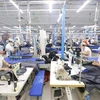 The leather-footwear industry is among the key export sectors attracting M&As in recent years (Photo: VNA)
The leather-footwear industry is among the key export sectors attracting M&As in recent years (Photo: VNA) An advantage of Vietnam’s textile-garment industry is low labour costs, and it was also identified as one of six sectors on a list of supporting industry products prioritised for development.
The country has become the “footwear factory” of the world, while the domestic market boasts a population of more than 96 million.
Vietnam is also establishing itself as the world’s electronic manufacturing hub, with FDI continuing to flow into the sector over recent years.
Tran Phuong Lan, an official from the Vietnam Competition and Consumer Authority at the Ministry of Industry and Trade (MoIT), said that apart from existing development potential, opportunities created by bilateral and multilateral free trade agreements (FTAs) have also fuelled those industries’ development.
For example, she noted, under the EU-Vietnam FTA that took effect on August 1, 2020, 42.5 percent of import tariffs on textile-garment products were immediately eliminated, while those on leather-footwear items will be gradually cut to zero percent. The Comprehensive and Progressive Agreement for Trans-Pacific Partnership (CPTPP), which came into force on December 30, 2018, abolished tariffs on Vietnam’s textile-garment products exported to other member countries.
A recent study of COVID-19’s impact on certain main industries in Vietnam noted that there have been signs of M&As surging in the textile-garment, footwear, and electronics sectors over the last three years.
In 2018, Japan’s Itochu Corporation spent 47 million USD on purchasing nearly 10 percent of shares in the Vietnam National Textile and Garment Group (Vinatex), raising its stake to almost 15 percent and becoming the second-largest shareholder, after MoIT.
Notable M&A deals last year included the one between the Taekwang MTC Vietnam Co. Ltd and the Jin Heoung Vina JSC in the leather-footwear industry, and the one between the Zenith Electronics LLC and Luxoft USA Inc. in the electronics industry.
Investors from the Republic of Korea, who have continually conducted large-scale M&A deals in Vietnam, also tend to select sectors with potential, like textile-garment, leather-footwear, and electronics.
Economic experts cited the experience of other countries as showing that to ensure effective M&A activities and protect the interests of all sides involved it is necessary to perfect related legal regulations, especially those on information transparency, and set up a regular consultative mechanism between the MoIT and the Ministry of Planning and Investment to develop an M&A database for key industries like textile-garment, leather-footwear, and electronics.
Vietnamese enterprises should proactively diversify technical solutions to keep information transparent, identify their targets in M&A deals, and analyse partners to avoid risks during negotiations.
In particular, experts noted, in M&As involving foreign firms, businesses should have a good grasp of market information and carefully assess foreign investors regardless of the deal’s value.
Nguyen Thi Tong, former Vice Chairwoman and former Secretary-General of the Vietnam Leather, Footwear and Handbag Association, recommended that as the leather-footwear and handbag sector is one of Vietnam’s five key export industries, businesses should make proactive moves to boost their capacity and cooperation via M&As within their sector, to secure sustainable development./.
VNA
